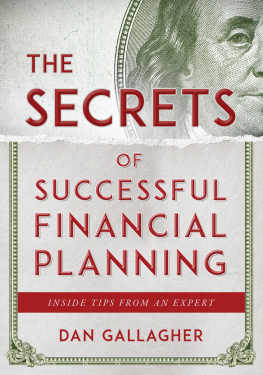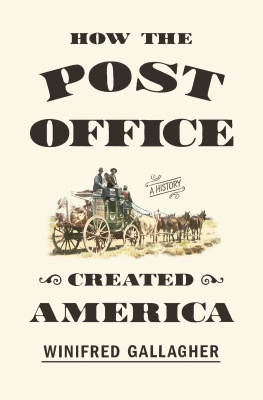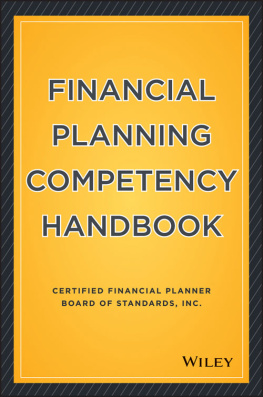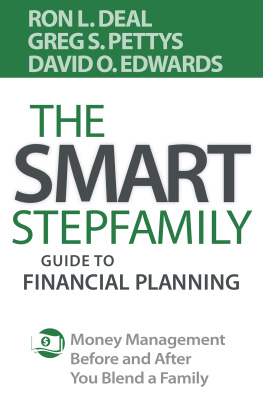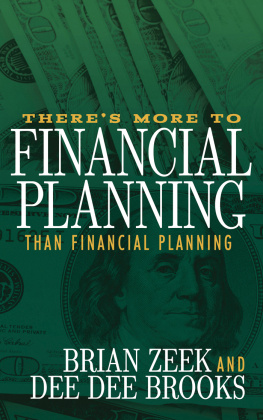Copyright 2018 by Dan Gallagher
All rights reserved. No part of this book may be reproduced in any manner without the express written consent of the publisher, except in the case of brief excerpts in critical reviews or articles. All inquiries should be addressed to Skyhorse Publishing, 307 West 36th Street, 11th Floor, New York, NY 10018.
Skyhorse Publishing books may be purchased in bulk at special discounts for sales promotion, corporate gifts, fund-raising, or educational purposes. Special editions can also be created to specifications. For details, contact the Special Sales Department, Skyhorse Publishing, 307 West 36th Street, 11th Floor, New York, NY 10018 or .
Skyhorse and Skyhorse Publishing are registered trademarks of Skyhorse Publishing, Inc., a Delaware corporation.
Visit our website at www.skyhorsepublishing.com.
10 9 8 7 6 5 4 3 2 1
Library of Congress Cataloging-in-Publication Data is available on file.
Cover design by Rain Saukas
Cover photo credit: iStock.com
Print ISBN: 978-1-5107-2530-0
Ebook ISBN: 978-1-5107-2531-7
Printed in the United States of America
To Laura, mother of our four; wife for life.
TABLE OF CONTENTS
INTRODUCTION
For more than three decades, until my December 2017 retirement, Ive asked clients about the financial strategies and experiences they had prior to our engagements. Roughly two-thirds had obtained great professional guidance, but had switched because of retiring advisors or a change of residence. However, about one-third of my clients had one of three problems that kept surfacing:
They did little to no planning, ignoring professional advice but occasionally taking ideas from magazine articles or other impersonal sources.
They diligently planned, using self-help books or software that offered strategies that were not customized to the clients specific situation.
They engaged human advisors who gave them bad advice (biased or incompetent) or bad products (inappropriate or noncompetitive). This includes professionals who used ghostwritten books to subtly promote their own financial products or fee-based services.
The first and second problems were usually caused by fear or disrespect of financial professionals, even though most professionals really do offer sound advice and problem-solving products. At best, these three problems led to inefficient or costly results; more often they led to financial disaster.
Real human experience stories, especially the tragedies that most of these are, help us learn and motivate us to act. True accounts stay with us because we see a path to avoiding danger. Although some of these accounts show certain advisors employing guile, or issuing self-serving advice to clients, not to mention poor judgment by some clients, dont get the wrong impression: these are rare horror stories from three decades of observation, and they are far from the norm for advisor behavior or even client error. They are admonitions. They are reminders to pray, or to at least have compassion, for the victims. I do not want anyone to make the mistakes we will explore. I want you to benefit from the information provided here. Buy copies of this book for your adult children and pre-retiree/retiree friends. This book can help you, and those you care about, avoid financial pitfalls. It can help you think about money as something to steward wisely rather than to hoard in fear or risk greedily. I have no products or advice to sell.
This book is different from other personal financial planning books for consumer use. Most topics herein have engaging narratives of real-life drama, success, and wrenching failures. These events rippled through time in their effects upon individuals and families I have known, with whom I have cried or celebrated. Much of my advice runs counter to commonly held beliefs among the writers of sensational news, regulators, and industry professionals. But every strategy discussed here is justified or derided in a way that enables you, the user, to determine whether it is good or bad for you in your specific situation, because I specify the conditions under which the strategy may be sound.
Knowing the conditions under which a strategy can help or hinder reduces the risk involved in doing ones own planning. Knowing the conditions under which a professional will make recommendations in your best interest is crucial to coordinating your strategies (newsflash: fee-only advisors are not the only professionals who must and will work in your best interest). Understanding the conditions that bear upon your product and advisor choices are what enable you to become confidentnot merely emotionally, but validlyin your decisions. We will explore optimal decision-making as well.
Finally, as the title implies, I will identify numerous little-knowneven some intentionally withheld or mischaracterized strategies: boom and bust indicators, restrictions upon consumer choice, good-versus-poor value factors, and others. These issues are crucial to understand when planning for success with your money and other hard-earned assets that you have the responsibility and privilege to steward.
How This Book Is Organized
.
The Six Components of Personal Financial Planning
Big problems can arise if you dont coordinate and integrate these components carefully, so each component has its own chapter. You might be tempted to skip cover the six financial planning components:
: Financial position (including cash and credit management and budgeting)
: Risk management (non-insurance and risk transfer techniques)
: Accumulation planning (strategies and the truth about financial and non-financial investments)
: Income tax management (including considerations most brokers always say to talk to a CPA about)
: Retirement planning (tips for the young, for seniors, from medical to lifestyle and everything in-between)
: Estate planning (health care powers of attorney versus living wills, and much, much more)
All of these topics connect to each other, and some integrate deeply, such as tax management and accumulation strategies. Picking optimally efficient strategies for your individual portfolio might depend on having an insurance product (risk management, like long-term care insurance) perform double duty with accumulation strategies, tax management, and retirement planning. Likewise, certain tax-advantaged pure investments may not be discussed in detail in the accumulation chapter because their use is primarily for retirement income planning. So, if you skip a chapter, you might miss important discussions that you assumed should be only in your chosen chapters. Topics are labeled within chapters to help you judge which to focus on in a detailed read versus a skim.
Whats New
There are several little-known changes and trends in financial products themselves; these are explored in the applicable chapters, mainly (accumulation and retirement). One financial product, of which even many professionals are unaware, is new on the market since 2014: Qualified Longevity Annuity Contracts (QLACs). Its still evolving in 2018, and so is the supplier list. Yes, there are new things under the sun! There are significant trends in some product categories, too, including some still-little-known changes in the last decade in some composite investments: mutual funds, investment trusts, derivatives, and risk-hedging products. Changes are brewing, too, with equity-indexed annuities. Design and tax treatment of life and annuity products are also changing: for example, drawing a death benefit from newer life policies while alive in event of terminal illness or to pay for at-home or institutionalized nursing and custodial care. There are also hybrid policies for long-term care expenses that can be for ordinary income (no premium loss if long-term care insurance (LTCi) is unneeded), and that preclude premiums being required. These trends and new products are clearly described and prescribed to help you decide whether and to what extent they are needed in your situation.

